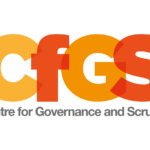Constructive scrutiny: What does it look like in practice?
In this guest blog, Dr Dave McKenna, a CfGS associate and local government practitioner, draws together his insights on how to get the balance right in providing effective challenge.
I’ve observed a few scrutiny committees in my time, for fun, obviously, but also for the occasional governance review. For these formal observations I’m looking for a various things, but mainly I’m looking for the signs of constructive scrutiny. If scrutiny is contributing to good governance, I figure, that should be evident in the way that meetings work. Right?
Linked to this, one of the questions I sometimes ask in development sessions I facilitate is this: “If I came to observe your scrutiny committee for the first time, and sat in the public gallery, what would I notice to tell me that the meeting was constructive?” Essentially, I’m inviting people to look in a mirror and notice the good stuff.
Of course, no scrutiny committee is completely constructive (or completely unconstructive), and I know that being constructive is a choice (and not always an easy one). Nevertheless, there are always some things that can be appreciated and perhaps expanded on.
So, if you are thinking about how scrutiny might be more constructive, maybe looking for new things to try, here is my take on what constructive scrutiny might look like in practice. It’s based on my observations and what I’ve learnt from councillors and officers in development sessions. I’m also drawing on what I’ve learnt from the coaches, mediators, facilitators and therapists etc, who are experts in constructive conversations.
The signs of constructive scrutiny
Perhaps the first sign of constructive scrutiny is body language, and this comes up a lot in development sessions. Do committee members look relaxed and appear genuinely interested in what others are saying. Do they give their full attention? Do members have what Nancy Kline calls a ‘listening face’, a face that says; “go on, I’m listening”. As an observer we don’t even need to hear what’s being said to get a strong sense of whether the conversation is constructive or not.
Another word that often comes up a lot in development sessions is ‘respect’. This is conveyed in choice of words, tone of voice as well as body language. I don’t think this is something that can be faked and I’m full of admiration for committee members who find a way to maintain professional cooperation in meetings with people that they don’t see eye to eye with politically or otherwise.
Professional cooperation is, of course, a serious business. Things should be friendly but not over familiar. Seating arrangements can help to convey this – a respectful separation between cabinet members and committee members, for example, is something that might suggest a relationship that is professional and not too cosy.
One essential element of constructive scrutiny is challenge. In a meeting we would expect, therefore, to hear issues of concern raised, alternatives considered and difficulties acknowledged. There is an element of Goldilocks here – the discussion shouldn’t be so aggressive that people are left feeling under attack, nor so passive that there is no creative tension. It has to be, well, just right.
Linked to this, another clear sign of a constructive meeting, are the back-and-forth exchanges that you often see in parliamentary scrutiny. Scrutineers are given time to explore a topic with the cabinet member and contributions build on each other so that, by the end, something new has been developed that wouldn’t have happened otherwise.
And, associated with these types of exchange, and constructive scrutiny more generally, are open questions, particularly ‘how’ and ‘what’ questions that encourage deliberation and a solution focus. So, in a constructive meeting we might expect to hear plenty of these questions being asked and plenty of attention being given to the answers of course!
Finally, something else, that comes up a lot when you ask people what a constructive meeting might look like, is preparation (particularly when you ask chairs!). What does this look like in practice? Well, nonverbally we might notice people checking papers and notes that they had already made. In terms of contributions, we might hear people referring to specific things in reports – facts and figures that have come up previously, perhaps. For me, a really good sign of a constructive meeting is when people have brought in additional evidence to add to the discussion. Perhaps referring to conversations they have had with residents or offering quotes from business owners. All of this suggests that members are able to keep in touch with the world outside and ensure that citizens and service users are centre stage in discussions.





